What are natural fabrics and how to distinguish them from synthetics?
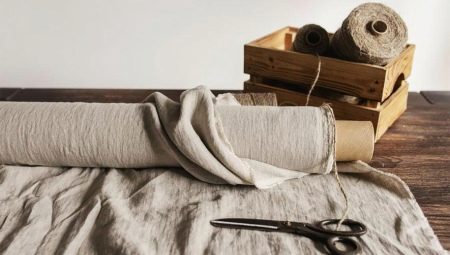
Natural fabrics are characterized by high quality, hygiene and attractive appearance. However, their high cost and some complexity of care often force buyers to give preference to synthetic analogs.
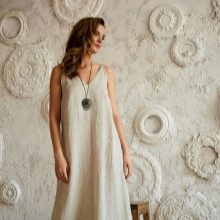
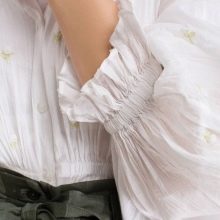

What it is?
Natural fabrics are those that are made from raw materials of natural origin, that is, plant, animal or mineral, and are not particularly exposed to aggressive chemical treatment. For example, the basis for such canvases can be flax, cotton, hemp, sheep fleece or even asbestos. Usually, animal materials are obtained by shearing livestock or harvesting silkworm cocoons, and plant fibers are obtained by processing farmed crops.
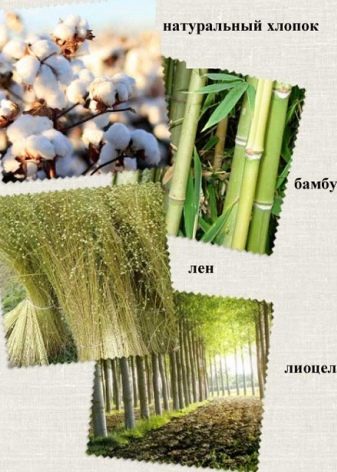
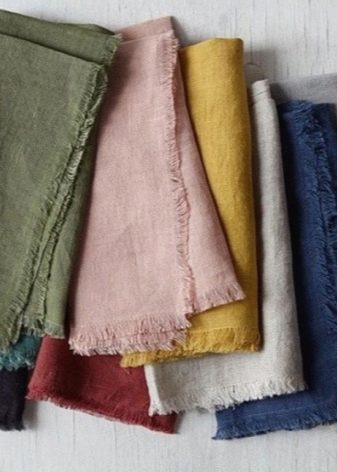
Mineral raw materials are the result of the processing of rocks. During the production process, the natural composition is not adjusted by any synthetic or chemical additives, which significantly improves the characteristics of the finished product. The opposite of such fabrics are chemical fabrics, they are also of artificial origin.
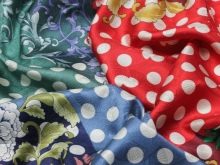

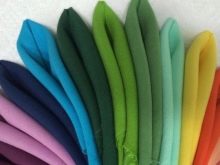
Natural textiles have a number of outstanding properties. So, an environmentally friendly product is absolutely safe for human health. In most cases, they are suitable even for those people who are prone to allergic reactions, skin problems and diseases of the respiratory system. In other words, in situations where wearing synthetics causes itching and irritation, or in some other way affects a person's condition, natural tissue does not harm him.
The hypoallergenic nature of the material allows it to be used for sewing children's clothing, however, there are still cases of allergy to wool or flax.

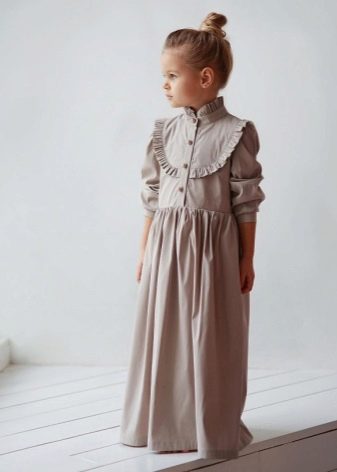
Natural canvases allow air to pass through, which makes it possible for the skin to breathe, and in some cases also reliably retain the heat of the human body. The material, as a rule, has excellent strength - for example, silk or linen cannot even be torn with bare hands. The latter, by the way, has the greatest wear resistance and is not afraid of ultraviolet radiation. The fabric of natural origin is characterized by lightness, sometimes even greater than that of synthetic counterparts, as a result of which clothes made from it are very comfortable to wear. The canvases are elastic and quickly regain their shape after being stretched or compressed. The advantages of the material also include hygroscopicity and the fact that organic fibers are very tactile.
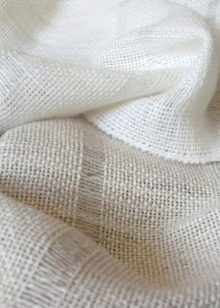

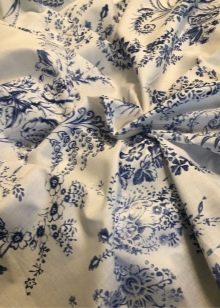
However, natural samples have a number of disadvantages. For example, the duration of their operation is significantly inferior to synthetics, the same cotton wears out extremely quickly. The cost of a natural product turns out to be much higher than that of its artificial counterpart. Linen is difficult to iron, it absorbs odors and does not hold its shape. Cotton fades in the sun, and poorly drying wool shrinks.
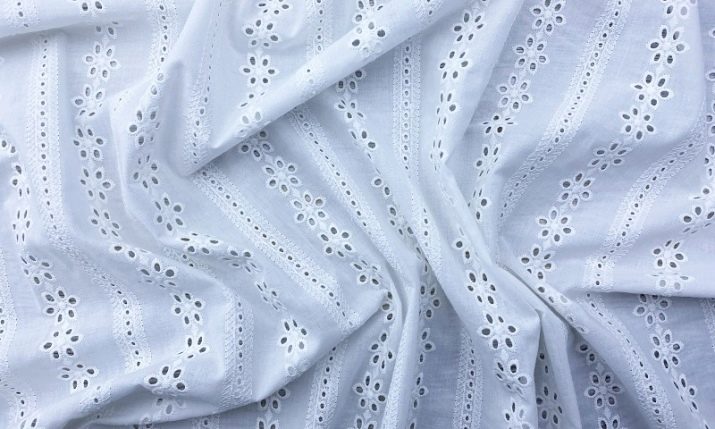
Views
The list of fabrics of natural origin is not extensive, however, all samples on the market have not only advantages, but also disadvantages.
Silk
Silk fabrics are made from animal fibers, which in turn are entirely composed of the proteins fibroin and sericin. This variety includes types of textiles characterized by lightness, strength, hygroscopicity, low shrinkage and a very attractive appearance. In this case, we are talking about satin, chiffon, directly silk, crepe and other materials of animal origin, owing their existence to the cocoons of the silkworm.
Such fabrics are chosen for the production of women's underwear, evening dresses, curtains and expensive bed linen. In addition, quite often a flap of silk serves as a lining fabric.
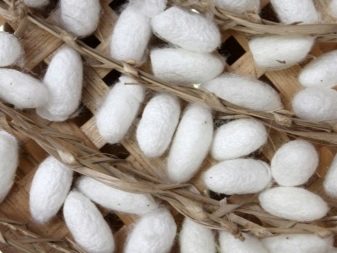

The light weight and high breathability of silk make it almost imperceptible on the body. The fabric ensures natural evaporation of moisture and, having the ability to thermoregulate, within a few minutes it adapts to the temperature of the skin. Proper care of the products ensures their service life for more than 10 years. Finally, the hygienic material does not allow bacteria and microbes to survive.
The disadvantages of silk fabrics include the fact that they are very difficult to cut, and they wrinkle quickly. If the product is exposed to sunlight for a long time, it will begin to deteriorate, and the ingress of liquid on matter leads to the immediate appearance of a stain.

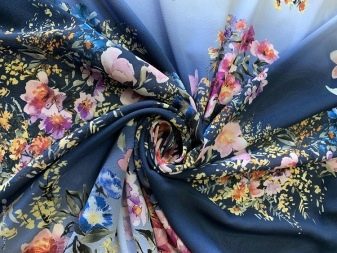
Cotton
In the composition of cotton fabrics, 94-96% are cellulose obtained from cotton fibers. The eco-friendly material behind them is considered relatively inexpensive and hygroscopic. The possibility of combining cotton and man-made fibers allows you to create canvases with better performance characteristics, for example, they become wrinkle-free. The group of cotton fabrics combines materials such as calico, jeans, velor, denim, jacquard, satin and others. Materials are actively used for sewing a variety of everyday clothes and home suits, children's clothing, bed linen and towels.
The indisputable advantage of cotton is that it is able to absorb up to 40% of water from its weight, practically without moisture. This property of the material becomes especially valuable in the summer season. The material is considered to be quite durable, and the ability of its fibers to allow air to pass through prevents the formation of a greenhouse effect under clothing.
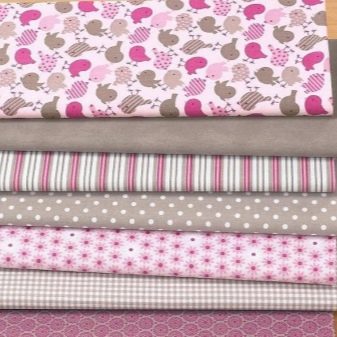
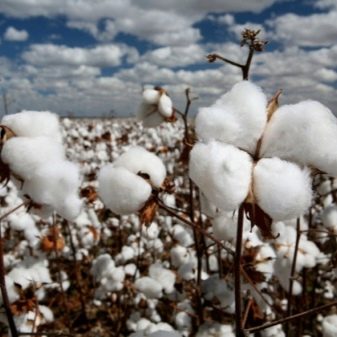
The light weight of the canvases is due to their thin structure. It is recommended to wear hypoallergenic products even for children, and caring for them is one of the simplest: both hand and machine wash is suitable, and things that dry quickly are easy to iron.
However, cotton fabrics wrinkle quickly and wear out and discolor over time. Improper care of things can also lead to shrinkage. The most common cotton-based varieties are bikinis and corduroy. The first is a soft and warm cloth with the smallest fibers. Ideal for creating clothes for the little ones: romper suits, bodysuits and undershirts. More dense corduroy is suitable for sewing outerwear, skirts and trousers, as well as for upholstery. Nowadays, it is still customary to add a small amount of synthetic fibers to corduroy, although it used to be made completely natural.
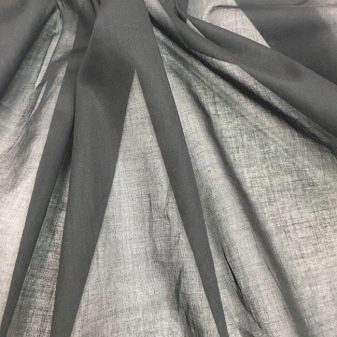

Linen
Linen fabrics consist mainly of cellulose, the amount of which reaches 80%. The material itself, being hygroscopic and wear-resistant, is increasingly being chosen as the basis for creating summer wardrobe items, baby diapers, tablecloths and bed linen. Coarser specimens are intended for technical items such as sacks, ropes, and even tarps. In this group, in addition to flax itself, there are also burlap, fine linen, edging and others.
Linen clothes are very pleasant to wear: they are fresh in them even in the most intense heat, and even the body temperature in such fabric can drop. The canvas also absorbs and evaporates moisture. The material is durable and durable, it is easy to care for, and you do not have to worry about the appearance of static electricity. However, flax crumples very quickly, and it takes too much time to eliminate creases.
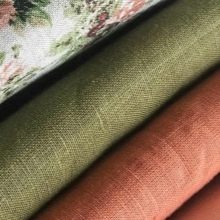
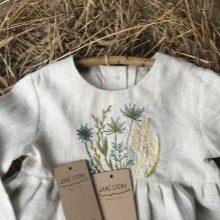
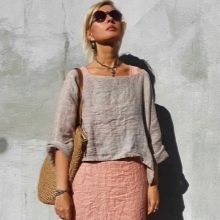
Woolen
The main constituent of woolen fabrics is keratin protein. Fabrics are worsted, finely and roughly woven, and they can be based not only on the traditional sheep fleece, but also on the skins of goats, rabbits and camels. Natural wool fabrics are most often used in the production of warm clothing for the winter and demi-season, as well as rugs and blankets. Felt, cashmere, cloth, tweed, felt and many other varieties are created on the basis of wool. Woolen fabrics stretch well and quickly regain their original shape. Canvases are easy to cut and clean, but often moth-prone and expensive.
Fabrics based on asbestos fibers stand apart: having acquired fire resistance, they are used to create overalls that require protection from high temperatures. Awn can also be used for industrial textiles.

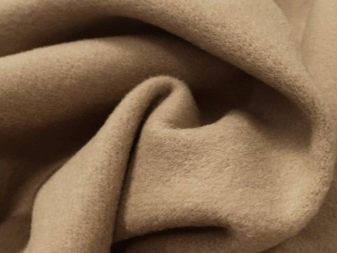
In addition to the ability to withstand high temperatures, these fabrics are distinguished by their durability, resistance to mechanical damage and the vital activity of harmful organisms, as well as sufficient flexibility. Unfortunately, wearing asbestos clothing over time can become harmful, as the fabric begins to release substances that are toxic to the human body.
Mention should also be made of hemp tissue, which is also of plant origin. This material is able to keep warm for a long time, and therefore is suitable for sewing clothes for the cold season. In addition, among the characteristics of the canvases, environmental friendliness, hygroscopicity, wear resistance and resistance to sunlight are distinguished.
The disadvantages of hemp fabric are its creasing and the coarseness of the fibers, which causes discomfort when worn.

How to check fabric for naturalness?
There are several ways to distinguish natural fabric from synthetics at home. Most often, craftswomen set fire to a thin piece of material or even several threads extracted from it. Natural silk and wool should smell like burnt hair, and the resulting aroma has varying degrees of intensity. When cotton is burned, an unobtrusive smell of burnt paper appears. Natural material burns at an average rate without crackling or ash. Linen does not burn well and periodically fades. This fabric, as a rule, does not form any specific aroma, although in some cases the appearance of burnt paper amber is possible.
All synthetics, under the influence of fire, behave the same way: they quickly ignite, melt like plastic, and in the end leaves a solid fused pea. The more artificial components are present in the canvas, the more intensely it will light up.

It is also worth mentioning that it is possible to determine whether the fabric is synthetic by the end products of combustion: in natural samples, unlike artificial ones, they easily crumble.
Having carefully studied the canvas, you can also draw conclusions about its origin. For example, a natural material may show some imperfections, for example, irregularities, while an artificial canvas usually looks perfect. Many varieties of synthetics are characterized by the absence of the need for ironing, and natural fabrics from washing always come out wrinkled, and they create creases after a simple fist clenching. Synthetic fabrics have a colder and more pronounced shine, while silk or wool tends to be warm and soft.









